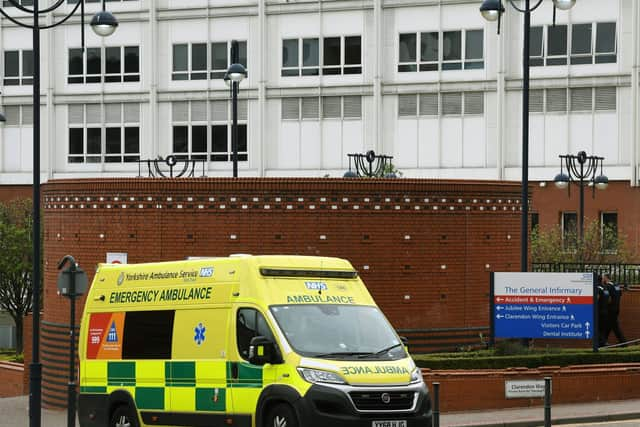New figures reveal Leeds areas with highest and lowest pandemic excess death rates
and live on Freeview channel 276
Data published by the Office for National Statistics (ONS) comparing the number of deaths registered during the pandemic to a baseline from previous years shows some areas of the country were significantly more affected than others.
The Health Foundation said the virus has laid bare inequalities across England and Wales, with poor health, deprivation and stretched public services to blame for increased exposure.
Advertisement
Hide AdAdvertisement
Hide Ad

In the 14 months to the end of April, there were 8,824 deaths registered in Leeds - 904 (11.4 per cent) more than the 7,920 predicted, according to the ONS figures.
Of those deaths, 1,535 had Covid-19 listed as the main cause. However, the ONS has cautioned that many Covid-related deaths at the start of the pandemic may have been undiagnosed.
A further breakdown for Leeds, released for the first time, also reveals which of the area's 107 neighbourhoods had the highest and lowest excess death rates during the pandemic.
The measurement compares the number of deaths registered during the period with how many were predicted based on previous mortality rates between 2014 and 2019.
Advertisement
Hide AdAdvertisement
Hide AdIt has been described as the key metric for the impact of the pandemic by Professor Chris Whitty, the Government's chief medical officer.
In Leeds, the neighbourhoods with the highest excess death rates were Gipton North, Meanwood South and Sugarwell, and Seacroft North and Monkswood.
Gipton North recorded 91 deaths, which was 33 (56.9 per cent) more than expected. The figure included 23 with Covid-19 listed as the main cause.
Meanwood South and Sugarwell had 86 deaths. It means there were 31 (56.4 per cent) more deaths than expected, including 25 due to Covid-19.
Advertisement
Hide AdAdvertisement
Hide AdMeanwhile, Seacroft North and Monkswood recorded 139 deaths, which was 40 (40.4 per cent) more than expected. This included 34 noted as being due to Covid-19.
Despite the backdrop of the pandemic, not every Leeds neighbourhood saw its excess death rates rising over the period studied.
Analysis of the data has revealed the greatest decline was in Tinshill, where 40 deaths were recorded. This figure was 12 (23.1 per cent) fewer deaths than expected, with seven listing Covid-19 as the main cause.
There were 20 deaths in the University and Little Woodhouse area, meaning there were four (16.7 per cent) fewer than expected. This included three due to Covid-19.
Advertisement
Hide AdAdvertisement
Hide AdAnd in Moor Allerton, the 61 deaths recorded meant there were 11 (15.3 per cent) fewer than expected. Six of those deaths were recorded as being due to Covid-19.
In its Covid-19 Impact Inquiry report, the Health Foundation said people aged under 65 and living in the most deprived areas were almost four times more likely to die from the virus, compared to those in the most affluent.
It found those in poor health, cramped housing conditions and some working environments faced an increased risk of exposure.
Assistant director David Finch said: "There is extensive evidence that poor health and existing inequalities left parts of the country vulnerable to the virus and defined the contours of its devastating impact.
Advertisement
Hide AdAdvertisement
Hide Ad"Deep-rooted issues such as poor health, increased financial insecurity and strained public services left some people more exposed."
The group now wants the Government to address the harm caused by the pandemic and invest more in helping lift people out of poverty.
Across England and Wales, the ONS reported that two periods over the 14 months – March 2020 to July 2020 and September 2020 to March this year – saw the highest rates for excess deaths.
In Leeds, the highest number of excess deaths came in April last year when there were 530.
Advertisement
Hide AdAdvertisement
Hide AdThe Department of Health and Social Care said increasing vaccine uptake was a “key step” to addressing the disparity of outcomes for those who catch Covid-19.
A spokesperson said: "The vaccines are saving lives and building a wall of protection against the disease."
Support the YEP and become a subscriber today. Enjoy unlimited access to local news and the latest on Leeds United, With a digital subscription, you see fewer ads, enjoy faster load times, and get access to exclusive newsletters and content. Click here to subscribe.
